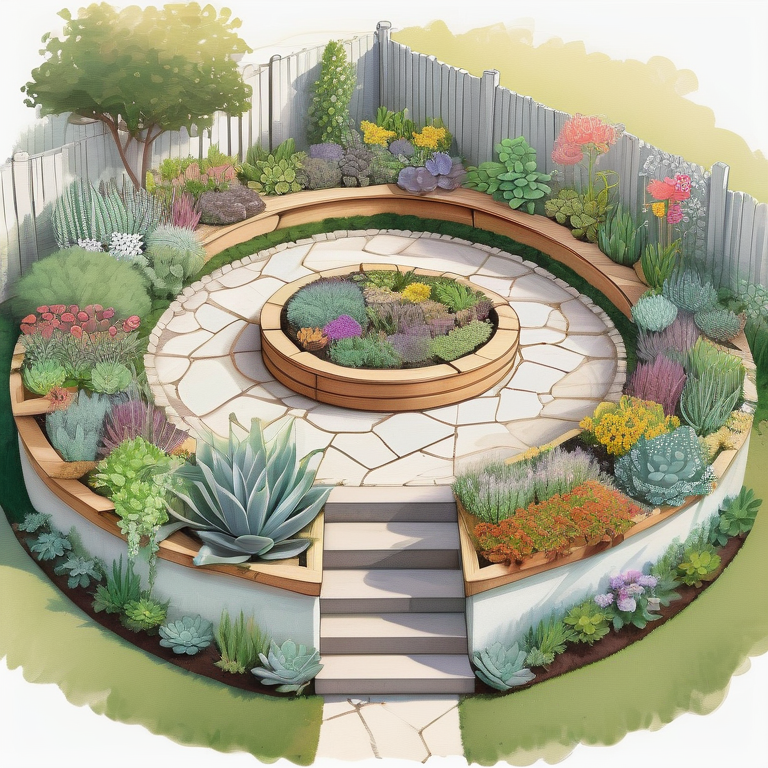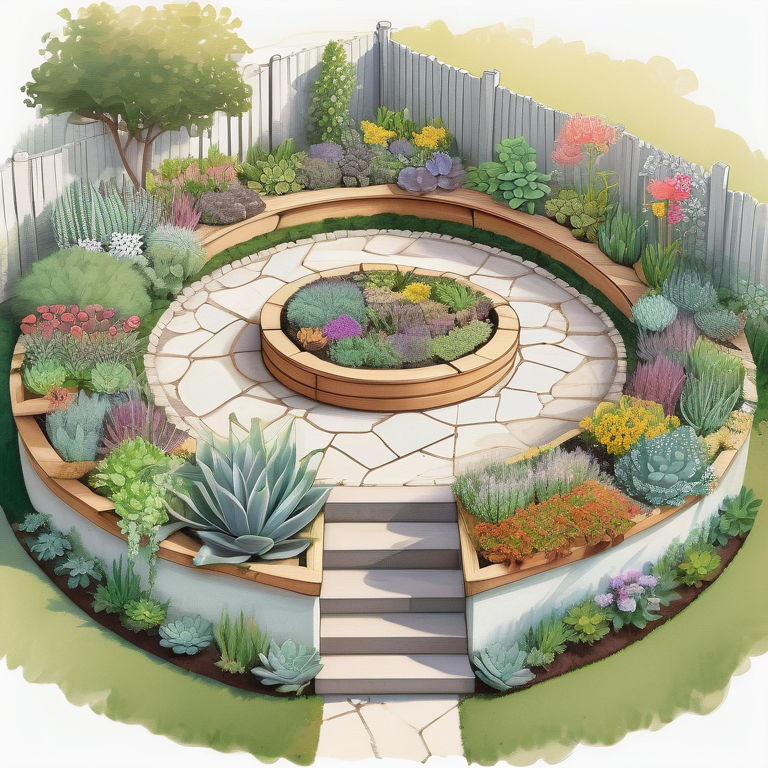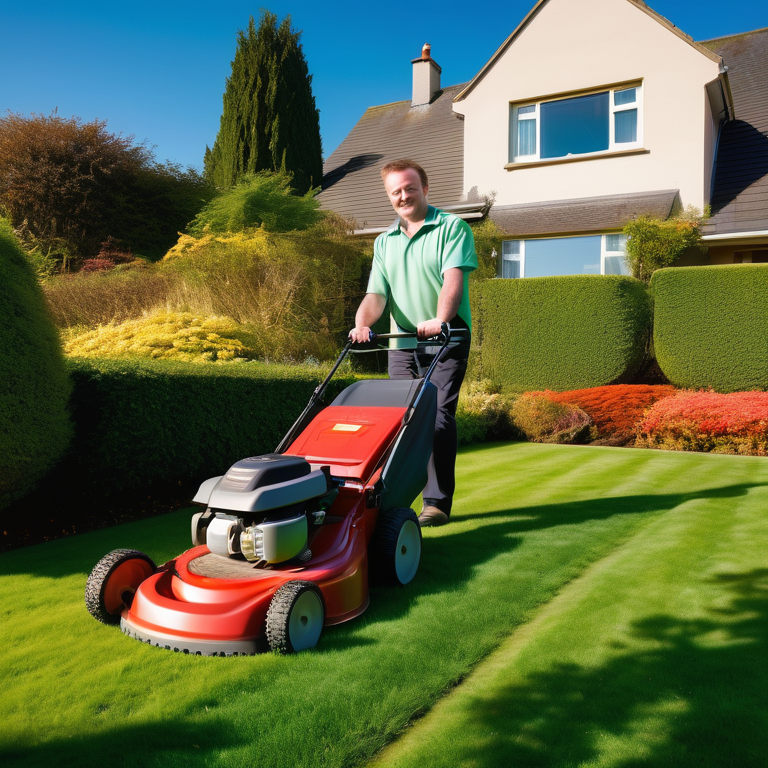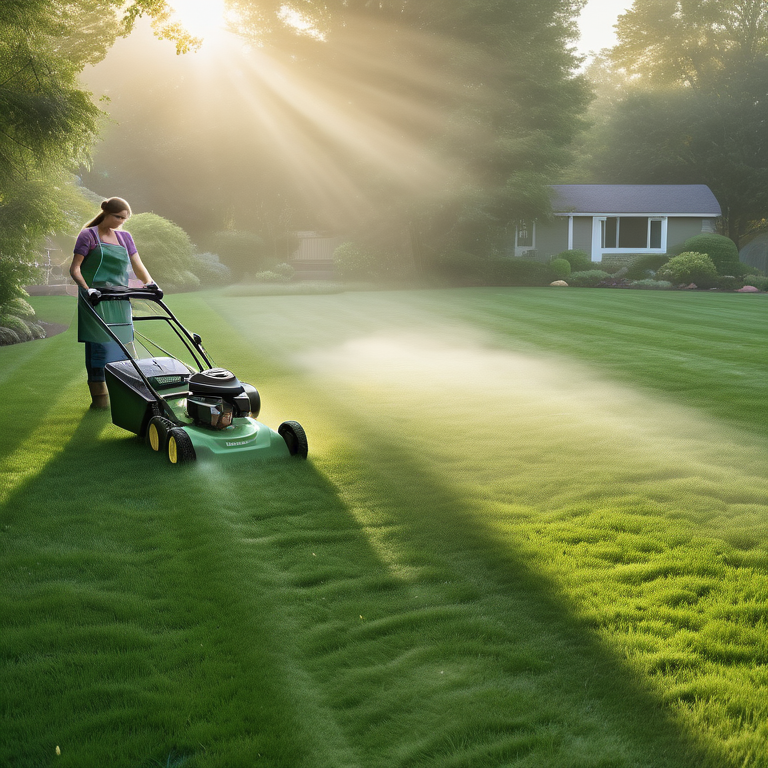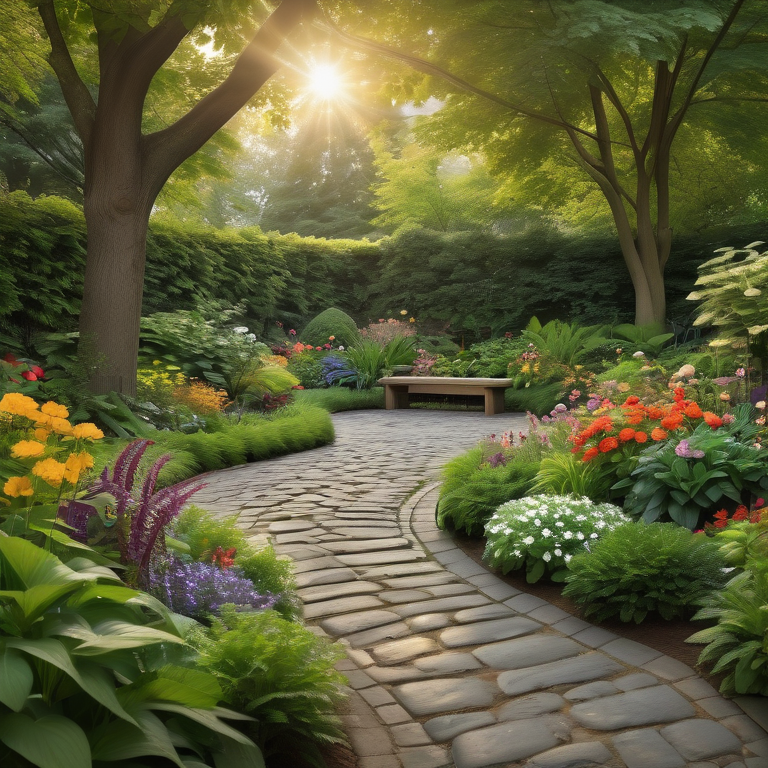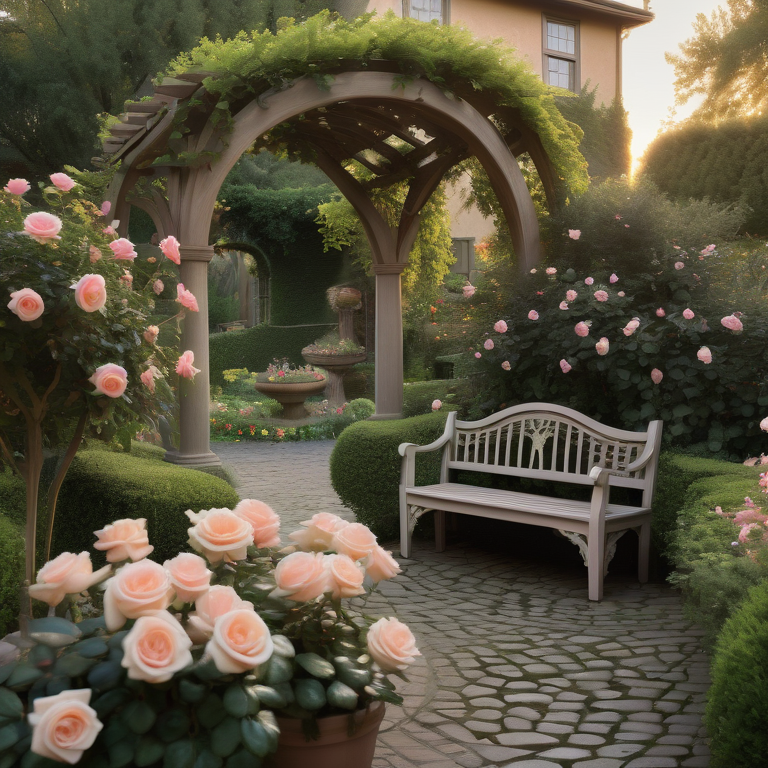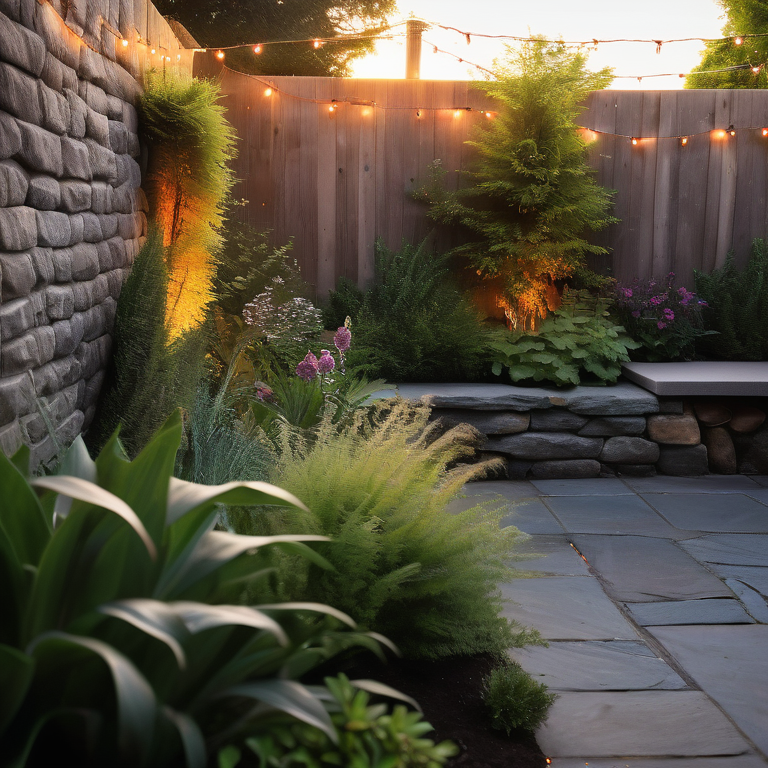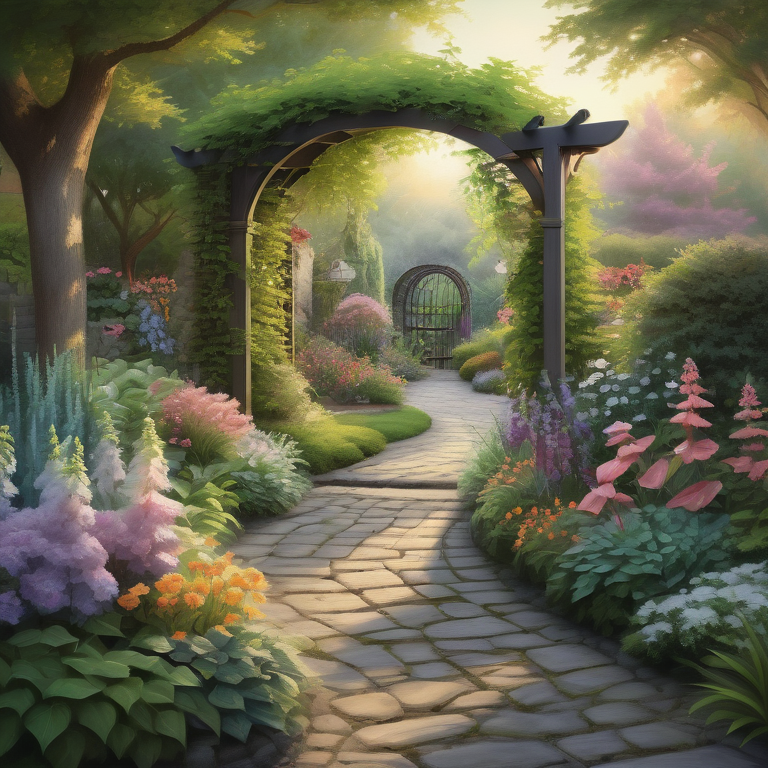Key Highlights
- Raised garden beds offer numerous benefits, including better soil control, improved drainage, and weed competition.
- Choosing the right plants and materials is crucial for the success of your garden bed.
- Garden bed designs range from classic wooden raised beds to modern industrial styles and pollinator-friendly options.
- It’s important to consider factors like garden layout, plant selection, and water efficiency when planning your garden bed.
- FAQs in the blog include benefits of raised garden beds, choosing the right plants, and managing pests.
Introduction
Elevating your garden with raised beds can transform your outdoor space, making it more functional, beautiful, and productive. With raised beds, you have total control over the soil composition, fertility, and moisture levels, ensuring optimal growing conditions for your plants. These beds also provide better drainage and prevent soil compaction, resulting in healthier garden plants. Additionally, raised beds reduce the need for bending and stooping, making gardening tasks more comfortable and accessible for people of all ages and abilities. If you’re interested in creating your own raised garden beds, check out these 14 DIY garden bed design plans for inspiration and step-by-step instructions.
Whether you have a small patio or a spacious backyard, there’s a garden bed design that can suit your needs. From classic wooden raised beds to modern industrial styles, there are countless options to choose from. In this blog, we will explore 14 inspiring garden bed designs that will help you create a stunning and functional outdoor space. Each design has its own unique features and benefits, allowing you to find the perfect fit for your garden. Plus, with the convenience of online shopping, you can easily find all the materials you need on Amazon’s Spring Sale.
14 Inspiring Garden Bed Designs to Transform Your Outdoor Space
If you’re looking to create a classic and timeless garden bed, the first design on our list is for you. The Classic Wooden Raised Garden Beds are made from sturdy cedar boards, providing a durable and long-lasting structure. These beds are versatile and can be customized to fit any size or shape, making them ideal for any garden layout. With the right garden soil and proper care, these raised beds can support a variety of plants, from flowers to vegetables. For a unique and space-saving design, consider the U-Shaped Cedar Raised Garden Bed, which can be easily built using raised garden bed plans from Stewart Landing Co on Etsy. www.wicklowlandscaping.ie
1. Classic Wooden Raised Garden Beds
The Classic Wooden Raised Garden Beds are a popular choice among gardeners for their timeless beauty and functionality. These beds are constructed using durable wood species like cedar or redwood, which are naturally resistant to rot and pests, ensuring that your raised bed will last for years to come. The sturdy construction of these beds makes them suitable for any garden layout, whether you have a small backyard or a larger space to work with.
One of the advantages of using raised beds is that they provide better soil control. You can fill the beds with high-quality garden soil, ensuring optimal growing conditions for your plants. Raised beds also have better drainage compared to traditional in-ground gardens, preventing waterlogging and root rot. This is especially beneficial for vegetable gardens, as it helps to promote healthy plant growth and higher yields. The recommended depth for a raised garden bed is 6-12 inches, which supports most vegetables. However, if you’re planning to grow root crops like carrots or potatoes, a depth of 18-24 inches can be more beneficial.
With Classic Wooden Raised Garden Beds, you have the flexibility to create a custom garden box that fits your specific needs. Whether you want a small bed for herbs and flowers or a larger bed for a vegetable garden, these raised beds can be easily built to your desired dimensions. The versatility of these beds allows you to make the most of your outdoor space and create a garden that is both beautiful and productive. Plant some beans and peas up top and some carrots, herbs, and salad greens on the lower level, and you’re golden. www.wicklowlandscaping.ie
2. Circular Flower Garden Bed with Central Fountain
If you want to add a touch of elegance and charm to your garden, a Circular Flower Garden Bed with a Central Fountain is the perfect choice. This design creates a stunning focal point in your outdoor space, combining the beauty of flowers with the soothing sound of flowing water. The circular shape of the bed allows for easy access to the plants from all sides, making it convenient for maintenance and harvesting.
The central fountain adds a sense of tranquility to the garden, attracting birds and butterflies while creating a calming atmosphere. This design is ideal for small to medium-sized gardens, as it maximizes the use of space while providing a visually appealing feature. You can choose a variety of flowering plants that complement each other in color and bloom time to create a vibrant and ever-changing display throughout the seasons.
When planning the layout of your circular flower garden bed, consider the height and growth habits of the plants to ensure that they are arranged in a visually pleasing way. You can also add decorative elements like stepping stones or a seating area to enhance the overall aesthetic of the garden. With a Circular Flower Garden Bed with a Central Fountain, you can transform your outdoor space into a serene and beautiful oasis.
3. Edible Garden Beds with Companion Planting
If you’re passionate about growing your own food, an Edible Garden Bed with Companion Planting is the perfect design for you. This style of garden bed incorporates the principles of companion planting, where certain plants are grown together to benefit each other in terms of pest control, nutrient uptake, and overall growth. To create the ultimate kitchen garden, try incorporating this design into your garden plan. Get the Ultimate Kitchen Garden plan here.
By grouping compatible plants together, you can create a balanced ecosystem that promotes healthy growth and reduces the need for chemical pesticides. For example, planting herbs like basil near tomatoes can help to repel pests that commonly affect tomato plants. Similarly, growing marigolds alongside your vegetable crops can deter harmful insects.
In an Edible Garden Bed with Companion Planting, you can grow a wide variety of fruits, vegetables, herbs, and flowers. This not only provides you with a bountiful harvest but also enhances the visual appeal of your garden. Whether you have a small kitchen garden or a larger space dedicated to edible crops, companion planting can help you maximize the productivity and health of your plants.
When planning your edible garden bed, consider the specific requirements and growth habits of the plants you want to grow. Group plants with similar needs together, such as those that require full sun or those that prefer partial shade. This will ensure that each plant receives the necessary conditions for optimal growth and productivity. With Edible Garden Beds with Companion Planting, you can create a beautiful and productive garden that provides fresh, homegrown produce such as cucumbers for your kitchen. Just remember to choose a high quality garden soil. www.wicklowlandscaping.ie
4. Low-Maintenance Perennial Garden Bed
For those who prefer a low-maintenance garden, a Perennial Garden Bed is the perfect choice. Perennials are plants that come back year after year, reducing the need for replanting and providing a more permanent and established landscape.
Designing a low-maintenance perennial garden bed involves selecting plants that are hardy, disease-resistant, and suited to your specific growing conditions. These plants require less care and attention compared to annuals, making it easier to maintain your garden throughout the year.
To create a low-maintenance perennial garden bed, start by preparing the soil with organic matter to improve its fertility and drainage. Choose a mix of perennials with different bloom times to ensure continuous color throughout the seasons. Incorporate plants with varying heights and textures to create visual interest and depth in the garden.
Once established, a low-maintenance perennial garden bed requires minimal watering, pruning, and fertilizing. Most perennials have deep root systems that allow them to access water and nutrients from deeper soil layers. This reduces the need for frequent watering and makes the garden more drought-tolerant.
With a low-maintenance perennial garden bed, you can enjoy a beautiful and vibrant garden without the constant upkeep. It’s a great option for busy gardeners or those who simply want to spend less time on maintenance and more time enjoying their outdoor space. www.wicklowlandscaping.ie
5. Modern Industrial Raised Beds with Metal Edging
If you’re looking for a modern and contemporary garden bed design, consider the Modern Industrial Raised Beds with Metal Edging. This style combines the functionality of raised beds with the sleek aesthetics of industrial design, creating a unique and eye-catching feature in your garden.
The raised beds are constructed using durable materials like metal or concrete, providing a sturdy and long-lasting structure. The metal edging adds a touch of sophistication and defines the boundaries of the garden bed. This design is ideal for urban or minimalist gardens, as it complements modern architectural styles and adds a unique visual element to the outdoor space.
The Modern Industrial Raised Beds with Metal Edging can be customized to fit any size or shape, allowing you to make the most of your available space. The raised beds provide better soil control and drainage, making them suitable for a wide range of plants, from flowers to vegetables.
To enhance the industrial aesthetic, consider incorporating other elements like concrete pavers or gravel pathways. These additions will further enhance the overall design and create a cohesive and visually appealing outdoor space. With Modern Industrial Raised Beds with Metal Edging, you can create a garden that is both functional and aesthetically pleasing. www.wicklowlandscaping.ie
6. Cottage-Style Mixed Garden Beds
For a charming and whimsical garden design, Cottage-Style Mixed Garden Beds are the perfect choice. This style embraces a relaxed and informal aesthetic, combining a mix of flowers, herbs, and vegetables to create a vibrant and colorful display.
Cottage-style gardens are known for their abundance of plants and their relaxed planting arrangements. The key to achieving this look is to mix different types of plants together, creating a harmonious and naturalistic composition. By blending flowers with herbs and vegetables, you not only create a visually appealing garden but also maximize the use of space and resources.
When planning your Cottage-Style Mixed Garden Beds, consider the color palette and bloom times of the plants. Choose a mix of annuals and perennials to ensure continuous color throughout the seasons. Incorporate climbing vines and trellises to add vertical interest and create a sense of depth in the garden.
To enhance the cottage-style aesthetic, consider adding other elements like antique garden furniture, decorative birdhouses, or a rustic pathway. These additions will further enhance the charm and whimsy of your garden and create a welcoming and inviting outdoor space. With Cottage-Style Mixed Garden Beds, you can create a garden that feels like a cozy and magical retreat. www.wicklowlandscaping.ie
7. Formal Symmetrical Garden Layouts
For those who prefer a more structured and formal garden design, a Formal Symmetrical Garden Layout is the perfect choice. This style embraces balance and symmetry, creating a sense of order and elegance in the outdoor space.
A formal symmetrical garden layout is characterized by its geometric shapes and patterns. The design is often centered around a focal point, such as a fountain or statue, with symmetrical beds and pathways radiating outwards. This creates a visually appealing and harmonious composition.
When planning a formal symmetrical garden layout, it’s important to consider the scale and proportions of the outdoor space. The size of the beds, the spacing between plants, and the dimensions of the pathways should all be carefully planned to create a balanced and cohesive design.
To enhance the formal aesthetic, consider incorporating elements like clipped hedges, topiaries, or formal plantings. These additions will further enhance the sense of order and elegance in the garden.
A formal symmetrical garden layout is well-suited for larger spaces or grand entrances, where it can create a striking and impressive first impression. With its timeless appeal and classic elegance, this garden design is sure to delight and inspire. www.wicklowlandscaping.ie
8. Vertical Garden Beds for Small Spaces
If you have limited space but still want to enjoy the benefits of gardening, Vertical Garden Beds are the perfect solution. This design allows you to maximize your growing area by utilizing vertical space, making it ideal for small balconies, patios, or even indoor spaces.
Vertical garden beds can be created using various methods, such as wall-mounted planters, hanging baskets, or trellises. These structures provide support for climbing plants, allowing them to grow upwards instead of spreading outwards. This not only saves valuable floor space but also adds a unique and decorative element to your outdoor or indoor environment. To ensure proper drainage and prevent weeds, line the interior of the garden bed with landscape fabric or hardware cloth before adding soil and plants.
When planning your vertical garden bed, consider the specific requirements of the plants you want to grow. Choose plants that are well-suited for vertical growth, such as trailing vines, herbs, or compact vegetables. Ensure that your chosen structure is sturdy enough to support the weight of the plants and soil.
Vertical garden beds are not only space-saving but also provide better airflow and sunlight exposure to the plants. This can result in healthier growth and higher yields. With Vertical Garden Beds, you can enjoy the beauty and benefits of gardening even in the smallest of spaces. www.wicklowlandscaping.ie
9. Pollinator-Friendly Garden Beds
Creating a garden that attracts and supports pollinators is not only beneficial for the environment but also adds beauty and biodiversity to your outdoor space. Pollinator-Friendly Garden Beds are designed specifically to provide food, shelter, and habitat for bees, butterflies, hummingbirds, and other important pollinating insects.
To create a pollinator-friendly garden bed, choose a variety of plants that provide nectar and pollen throughout the seasons. Native plants are particularly attractive to pollinators, as they have evolved alongside them and provide the most suitable food sources. Incorporate a mix of flowering plants with different bloom times to ensure a continuous supply of food for pollinators.
When planning your pollinator-friendly garden bed, consider adding features like a shallow water source, nesting sites, and sheltered areas. This will provide additional resources and habitats for pollinators, making your garden even more attractive to them.
Avoid using pesticides and herbicides in your garden, as they can be harmful to pollinators. Instead, opt for organic gardening practices and natural pest control methods.
With Pollinator-Friendly Garden Beds, you can create a beautiful and thriving garden while also playing a vital role in supporting pollinator populations.
10. Water-Efficient Xeriscape Garden Designs
If you live in an arid or drought-prone region, a Water-Efficient Xeriscape Garden Design is the perfect choice for your outdoor space. Xeriscaping is a landscaping technique that focuses on conserving water while creating a beautiful and sustainable garden.
Xeriscape garden designs incorporate plants that are well-adapted to arid conditions and require minimal watering. These plants are typically drought-tolerant, low-maintenance, and native to the region. By choosing plants that are suited to your climate, you can reduce the need for irrigation and save water.
In a xeriscape garden design, water-efficient practices and technologies are used to minimize water use. This includes using mulch to retain moisture, installing drip irrigation systems for targeted watering, and grouping plants with similar water needs together.
When planning your water-efficient xeriscape garden, consider incorporating other elements like rocks, gravel, or ornamental grasses. These additions can add texture and visual interest to the garden while reducing the need for water-intensive plants.
With a Water-Efficient Xeriscape Garden Design, you can create a beautiful and sustainable garden that thrives in dry conditions while conserving water resources.
11. Herb Spiral Garden Beds
If you’re a fan of cooking with fresh herbs, an Herb Spiral Garden Bed is a must-have in your outdoor space. This unique and practical design allows you to grow a variety of culinary herbs in a small and compact area.
An herb spiral is a raised bed that is built in a spiral shape, with each layer of the spiral being slightly higher than the previous one. This design creates different microclimates within the bed, allowing you to grow herbs with varying moisture and sunlight requirements.
The top of the spiral receives the most sunlight and is ideal for herbs that require full sun, such as rosemary and thyme. As you move down the spiral, the conditions become shadier and more suitable for herbs like parsley and cilantro, which prefer partial shade.
The herb spiral design also maximizes the use of space, allowing you to grow a wide variety of herbs in a small footprint. Additionally, the spiral shape provides better access to the herbs, making it easier to harvest and maintain the plants.
With an Herb Spiral Garden Bed, you can create a functional and visually appealing garden that provides a constant supply of fresh herbs for your culinary creations. www.wicklowlandscaping.ie
12. Native Plant Garden Beds for Wildlife
Creating a garden that supports local wildlife and promotes biodiversity is both rewarding and beneficial for the environment. Native Plant Garden are designed to attract and provide habitat for birds, butterflies, bees, and other wildlife species.
Native plants are those that naturally occur in a specific region and have evolved alongside local wildlife. They provide food, shelter, and breeding sites for native insects, birds, and other animals. By incorporating native plants into your garden, you are creating a sustainable and ecologically balanced habitat.
When planning your native plant garden bed, choose a mix of plants that provide food and shelter throughout the year. Include a variety of flowering plants with different bloom times to ensure a continuous supply of nectar and pollen for pollinators. Incorporate native grasses and shrubs to provide nesting sites and cover for critters and wildlife.
Native plant garden beds not only support local biodiversity but also require less water and maintenance compared to non-native plants. They are well-suited for the local climate and soil conditions, making them more resilient and adaptable to changing environmental conditions.
With Native Plant Garden Beds, you can create a beautiful and thriving garden that provides a haven for wildlife and promotes a healthy and sustainable ecosystem. www.wicklowlandscaping.ie
13. Ornamental Grass Garden Beds
If you’re looking to add texture, movement, and visual interest to your garden, Ornamental Grass Garden Beds are the perfect choice. Ornamental grasses are versatile and low-maintenance plants that can make a dramatic statement in any landscape design.
Ornamental grasses come in a variety of sizes, shapes, and colors, allowing you to create a unique and dynamic garden bed. They can be used as focal points, borders, or mass plantings, depending on the desired effect.
When planning your ornamental grass garden bed, consider the height and growth habit of the grasses. Choose a mix of tall, medium, and low-growing varieties to create layers of texture and visual depth. Combine grasses with contrasting foliage colors or flowering plants to create a striking and harmonious composition.
Ornamental grasses are known for their ability to sway and move gracefully in the wind, adding a sense of movement and life to the garden. They also provide habitat and food for birds and other wildlife, further enhancing the ecological value of your garden.
With Ornamental Grass Garden Beds, you can create a visually stunning and dynamic garden that will be the envy of your neighbors.
14. Seasonal Color Rotation Beds
If you love changing up the look of your garden throughout the year, Seasonal Color Rotation Beds are the perfect design choice. These beds allow you to showcase different plants and colors as the seasons change, keeping your garden fresh and vibrant all year round.
Seasonal color rotation beds involve planting annuals and perennials that provide blooms and foliage in different seasons. By strategically selecting plants with varying bloom times and color palettes, you can create a dynamic and ever-changing garden.
When planning your seasonal color rotation beds, consider the specific requirements and growth habits of the plants you choose. Group plants with similar water and light needs together to ensure their optimal growth and health.
To further enhance the seasonal color impact, consider incorporating decorative elements like garden ornaments, container plantings, or garden structures. These additions will add visual interest and create a cohesive and well-designed garden.
With Seasonal Color Rotation Beds, you can create a garden that evolves with the seasons, providing a constantly changing and visually stunning outdoor space. www.wicklowlandscaping.ie
Key Takeaways on Garden Bed Design Plans
- Raised garden beds offer numerous benefits, including better soil control, improved drainage, and reduced weed competition.
- Choosing the right plants and materials is crucial for the success of your garden bed.
- There are various garden bed designs to choose from, including classic wooden raised beds, modern industrial styles, and pollinator-friendly options.
- Consider factors like garden layout, plant selection, and water efficiency when planning your garden bed.
- FAQs in the blog include benefits of raised garden beds, choosing the right plants, and managing pests.
Clearly Describing Garden Bed Design Concepts
When it comes to garden bed design, clarity and understanding are key. Clearly describing the different design concepts and ideas ensures that you can make informed decisions about what will work best for your outdoor space.
Each garden bed design concept has its own unique features and benefits, whether it’s the classic charm of a cottage-style mixed garden bed or the sleek modernity of industrial raised beds with metal edging. By clearly describing these concepts, you can visualize how they will fit into your garden and determine which design will best suit your needs and preferences.
Clarity also extends to understanding the specific requirements and considerations for each design concept. Whether it’s the depth and materials of raised beds or the specific planting arrangements of an herb spiral, having a clear understanding of these details ensures that your garden bed design will be successful and thriving. www.wicklowlandscaping.ie
Summarizing Current Knowledge on Garden Bed Planning
Garden bed planning involves considering various factors such as garden layout, plant selection, and water efficiency. By summarizing the current knowledge on garden bed planning, you can gain a comprehensive understanding of the important aspects to consider.
Key points to remember include the benefits of raised garden beds, such as better soil control and reduced weed competition. Choosing the right plants and materials is crucial, as they will determine the success of your garden bed.
Additionally, understanding factors like sun exposure, garden soil, and plant tags is important for selecting the right plants for your garden bed. Water efficiency can be achieved through practices like drip irrigation and mulching.
By summarizing the current knowledge on garden bed planning, you can approach your garden design with confidence and make informed decisions that will lead to a successful and thriving outdoor space.
Highlighting the Importance of Choosing the Right Plants
Choosing the right plants for your garden bed is crucial for its success. Different plants have different requirements and preferences, and selecting the right ones will ensure that they thrive in your garden.
Consider factors like hours of sunlight, garden soil, and plant tags when selecting plants for your garden bed. Understanding these requirements will help you choose plants that are well-suited to your specific growing conditions.
The right plant selection is important for garden success. By choosing plants that are compatible with your garden’s environment, you can create a thriving and beautiful outdoor space. Whether you’re planting flowers, vegetables, or herbs, selecting the right plants is key to achieving the results you desire. www.wicklowlandscaping.ie
Conclusion
In conclusion, these 14 garden bed design plans offer a myriad of options to elevate your outdoor space. Each design caters to different tastes and requirements, from classic wooden raised beds to water-efficient xeriscape layouts. Choosing the right plants and materials is vital for a successful garden bed. Whether you seek eco-friendly options or ways to manage pests, these designs provide inspiration and functionality. With these innovative ideas, you can transform your garden into a beautiful and sustainable oasis that enhances both the aesthetic appeal and value of your property. www.wicklowlandscaping.ie
Frequently Asked Questions
What Are the Benefits of Raised Garden Beds?
Raised garden beds offer numerous benefits, including better soil control, improved drainage, and reduced weed competition. They also provide a more comfortable working height and can prolong the growing season. Additionally, raised beds are ideal for growing root crops as they provide the deep soil necessary for their growth.
How Do I Choose the Right Plants for My Garden Bed?
When choosing plants for your garden bed, consider factors like hours of sunlight, plant tags, and the specific requirements of each plant. This will help you select plants that are well-suited to your garden’s environment and ensure their success and growth.
Can Garden Beds Improve Property Value?
Well-designed and well-maintained garden beds can enhance the curb appeal of your property and increase its value. Beautiful gardens create a positive first impression and can make your outdoor space more attractive and enjoyable, which can be appealing to potential buyers.
How Often Should Garden Beds Be Refreshed?
Garden beds should be refreshed periodically to maintain soil fertility and quality. Adding compost annually or as needed can replenish nutrients and improve soil structure. Refreshing garden beds also helps to prevent disease and pests and ensures healthy plant growth.
What Are Some Eco-Friendly Garden Bed Materials?
Eco-friendly garden bed materials include sustainably sourced wood, such as cedar, which is naturally resistant to rot. Other options include using recycled materials like pallets or repurposing cardboard as a biodegradable weed barrier. Choosing these materials promotes sustainability and reduces waste.
How to Manage Pests in Garden Beds?
To manage pests in garden beds, try using natural deterrents like companion planting, beneficial insects, or homemade pest repellents. Regularly inspecting plants for signs of pests and promptly addressing any issues can also help to prevent pest infestations and minimize damage to your garden.
What Is the Best Time of Year to Start a Garden Bed?
The best time to start a garden bed depends on the climate and the specific plants you want to grow. In general, it’s best to start a garden bed in the spring when the soil has thawed and temperatures are suitable for plant growth. This allows plants to establish themselves before the heat of summer.
How Can I Make My Garden Bed More Water-Efficient?
To make your garden bed more water-efficient, consider installing a drip irrigation system, which provides targeted watering to plants’ roots. Mulching the soil with organic materials like straw or wood chips helps to retain moisture and reduce evaporation, conserving water.
Are There Any Innovative Tools for Garden Bed Design?
There are various innovative tools available for garden bed design, including software and online layout planners. These tools allow you to visualize and plan your garden bed design, experiment with different layouts, and determine the optimal placement of plants and features.
How to Incorporate Garden Beds into Small Spaces?
To incorporate garden beds into small spaces, consider vertical gardening techniques like using trellises or hanging baskets. Container gardening is also a great option, as it allows you to grow plants in pots or containers, maximizing space and flexibility.
What Are Some Common Mistakes to Avoid in Garden Bed Design?
Common mistakes to avoid in garden bed design include overplanting, which can lead to overcrowding and poor plant growth, and choosing a poor location with unsuitable sunlight or soil conditions. Proper planning and thoughtful plant selection can help prevent these mistakes.
